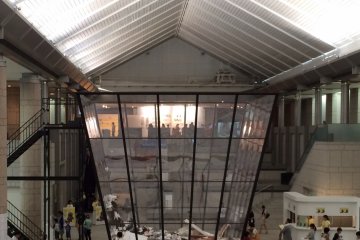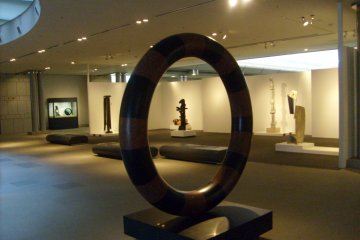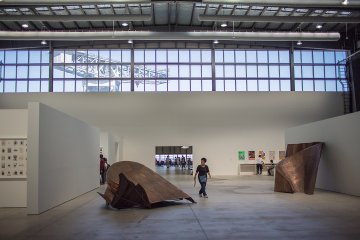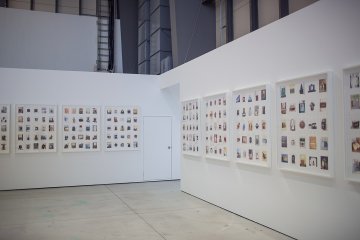Art. It's what Japan's famous for, right? From the meditated forms of ukiyo-e (Japanese ink painting), to Yayoi Kusama's infinity dots, art in Japan has got everyone talking. On the other hand, the Yokohama Triennale is tackling the big topic of 'art' from a whole new direction.
Alongside the Fukuoka Art Triennale and the Setouchi Triennale, the Yokohama Triennale is one of Japan's biggest art events. Celebrated every three years in this beautiful portside city, the 2014 Triennale ran between August 1 and November 3. Curated this year by artist Yasumasa Morimura, the Yokohama Triennale is an eclectic abundance of the weird and wonderful. Titled 'Art Fahrenheit: Sailing into the Sea of Oblivion', this year's exhibition hopes to define the position of Asia, it's art and it's culture, amongst the wider world, and sailing on back of European Modernism.
For a lot of people, thinking about art 'these days' conjures up a bit of a blank canvas - and funnily enough, at the Yokohama Triennale that's exactly what you will find! The Yokohama Triennale has been divided into chapters, with a chronology like a book. The first chapters is a room filled with art, but at the same time seems to feel almost entirely empty. Works by the greats who inspired the spirit of todays art are exhibited - there are the simple formal sketches of Kasmir Malevich, the provocative photography of René Magritte. These are positioned alongside artworks by those who followed, creating art in a similarly blank fashion: whether its Isa Genzken's postmodern readymades, or one of Felix Gonzalez-Torres' paper stacks series. All these works provide us with the context for how to view the entire exhibition.
Yet, like all great exhibitions, the Yokohama Triennale is not without a bit of fun. One of the most exciting works in this year's curation is Michael Landy's Art Bin, of which he describes as "a monument to creative failure". Visitors to the gallery can apply to toss their artworks (or creative failures) into Landy's Art Bin, one of the most impressive and interactive works in this year's exhibition.
My personal favorite in this 2014 triennale is the inclusion of Interview with a Cat by Marcel Broodthaers (1970). This artwork is situated in a darkened room, with an empty table and two chairs spotlighted in the center of the room. Overhead the audio plays. A translation is provided on the tabletop. "Is that a good painting?..." the artists asks in French. "Miaow!" replies the cat. I suppose in this way the cat sums up the artworks in the exhibition as well as I ever could.
The Yokohama Triennale comes alive across more than four different venues in Yokohama. Start your tour of the exhibition at the Yokohama Art Museum, accessible from Minatomirai Station. A free shuttle is available between here and the exhibition space at Shinko Pier. Two ticket options are available on the day: The Yokohama Triennale 2014 ticket, or a creative tie-up ticket, which offers admission to both the Triennale and also various other events held at surrounding venues. If you are only in Yokohama for one day, the single Yokohama Triennale 2014 ticket will be more than enough to keep you occupied. Concession prices are available for high school and university students.











